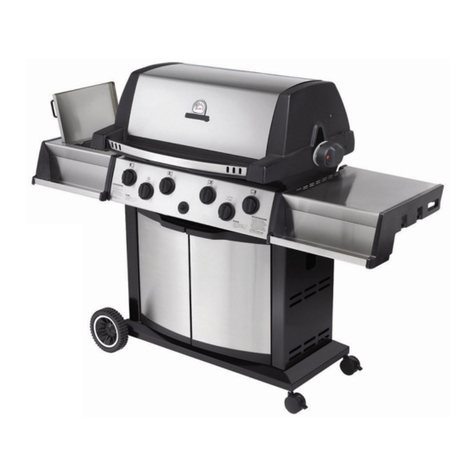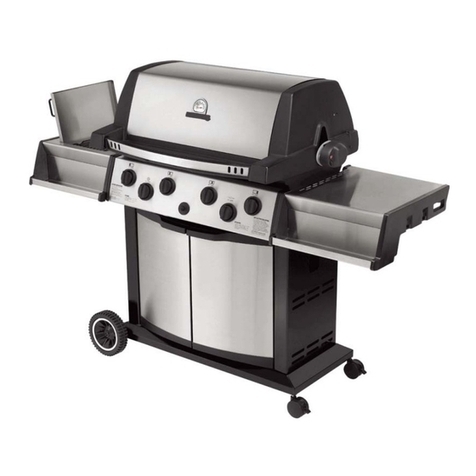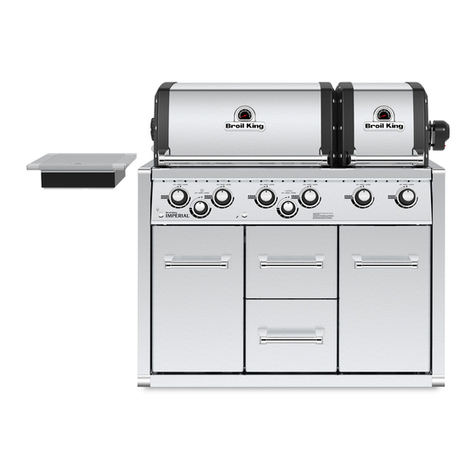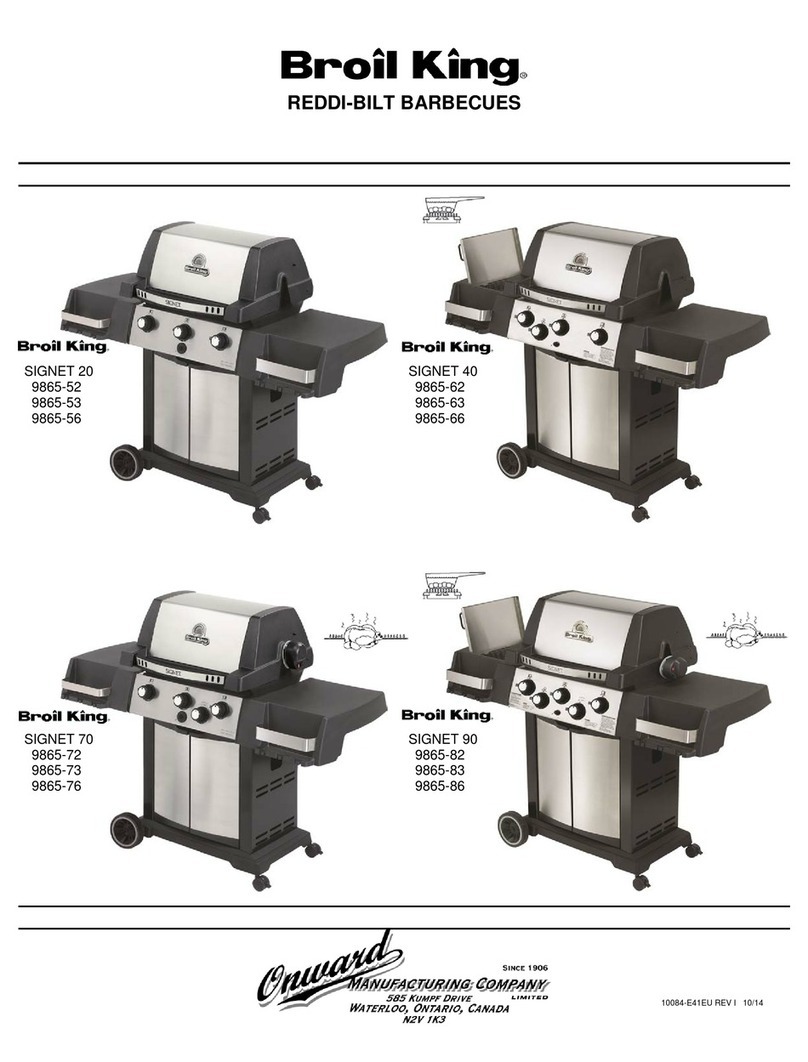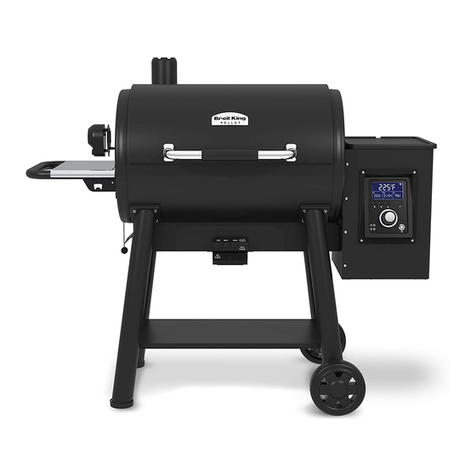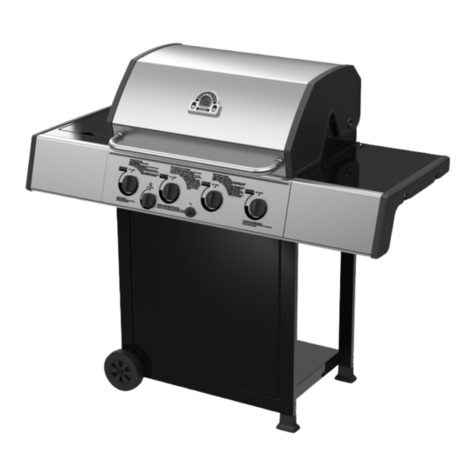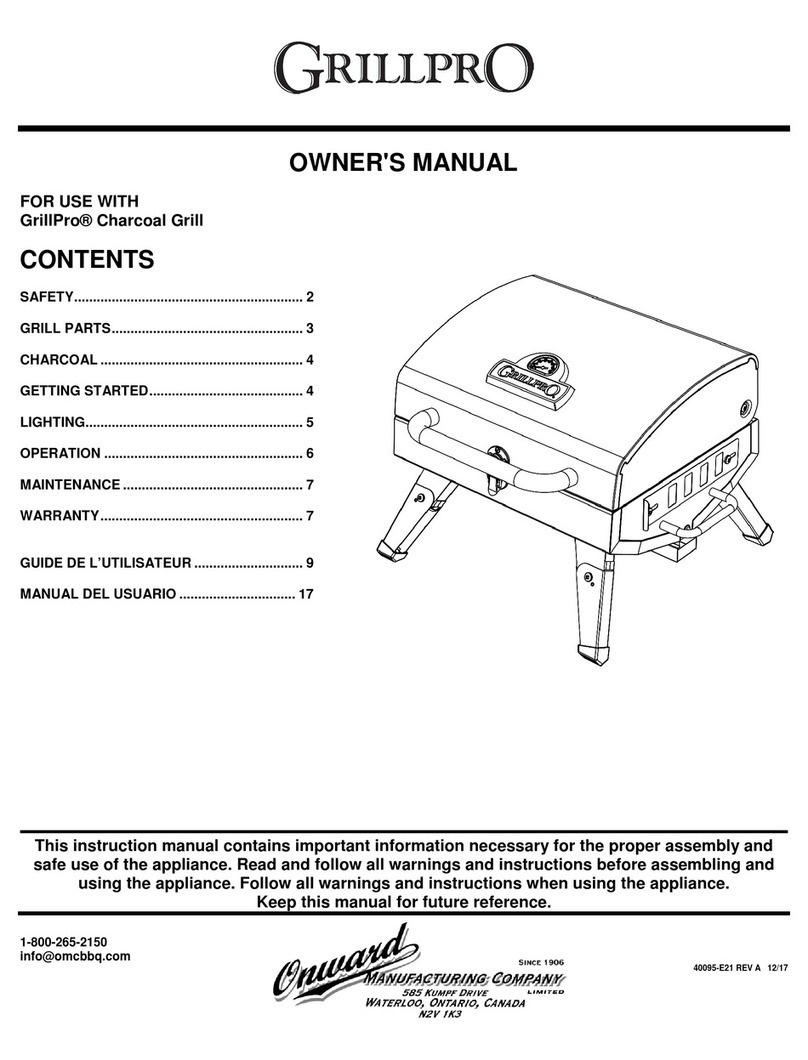
9
COOKING TECHNIQUES
PREPARATION
1. Prepare food in advance to avoid delay and timing
problems. If using marinade or spices, they should
be applied before placing meat on the cooking grid.
2. Organize the area around the barbecue to include
forks, tongs, oven mitts, sauces and seasonings, to
allow you to stay in the vicinity of the barbecue while
cooking.
3. Trim excess fat from meat to minimize the "flare-
ups" that are caused by dripping grease.
4. To avoid the problem of food sticking to the cooking
grid, coat the grids with vegetable oil or non-stick
spray before lighting the burners.
5. Pre-heat the barbecue to the desired temperature
with the cover closed, before starting to cook.
6. Vegetables are best done in aluminum foil with
enough moisture to create steam. Cooking time for
vegetables will be similar to baking or steaming on
the electric range.
7. Check the gas supply before starting the barbecue.
MEAT THERMOMETER GUIDE:
BEEF/LAMB RARE 55°C (130°F)
BEEF/LAMB MEDIUM 65°C (150°F)
BEEF/LAMB WELL DONE 70°C (160°F)
VEAL WELL DONE 65°C (150°F)
PORK WELL DONE 74°C (170°F)
POULTRY WELL DONE 80°C (170°F)
GRILL COOKING
Grill cooking is the most popular form of barbecuing.
The techniques are dictated by personal taste.
1. Hold the salt when cooking meats on the barbecue.
The meat will stay juicier if the salt is added after
cooking.
2. Don't baste meats until they are one-third to one-half
cooked. Sauces with tomato, sugar, and oil burn
easily and can produce unappetizing results if
allowed to burn.
3. To prevent steaks from "drying out", use tongs
rather than a fork and start on "Hi" to sear the meat
and seal the juices in. Reduce the heat when the
meat is well browned. Generally, thicker cuts of
meat will stay moist better on a barbecue.
4. To test when the meat is done, make a small cut at
the thickest section or near the bone to check
colour.
5. For best results, don't let the flames reach the food.
If "flare-ups" occur, remove the food. This will
eliminate the "burned taste", particularly for chicken
and pork.
GRILL COOKING
6. Grilling with the cover closed on low heat will
enhance the "smoked" flavour.
7. After cooking, close the cover and turn burners to
"Hi" for approximately 10 minutes to burn off any
residue on the grids and briquets.
8. For additional heat adjustment use two position
cooking grid to raise and lower cooking surface.
GRILL COOKING GUIDE:
COOKING TIME
MEAT SIZE/WEIGHT TEMP. RARE WELL
DONE
HAMBURGER PATTIES MED-HIGH 10 - 20 MIN
STEAKS 1" THICK MED-HIGH 10 - 30 MIN
STEAKS 1"-2" THICK MED-HIGH 20 - 40 MIN
LAMB CHOPS 1" THICK LOW-MED 15 - 25 MIN
PORK CHOPS 1/2" THICK LOW-MED 15 - 25 MIN
SPARE RIBS WHOLE LOW 40 - 60 MIN
CHICKEN WINGS WHOLE LOW 25 - 35 MIN
CHICKEN BREAST WHOLE LOW 30 - 40 MIN
FISH FILLET 1½" THICK LOW-MED 15 - 20 MIN
LOBSTER (SPLIT) WHOLE/TAILS LOW-MED 15 - 20 MIN
CONVECTION COOKING
This method is ideal for roasting large cuts of meat with
or without a rotisserie.
1. Set up the barbecue before lighting. Place drip pan
on top of briquets, beneath centre of food. Put half
to one inch of water in the drip pan. Fruit juice, wine
or a marinade may also be added to enhance the
flavour. Do not let the drip pan run dry.
2. For roasting, place meat in a roasting rack directly
on the grids.
3. In most cases convection cooking is best with the
cover closed and the heat reduced.
4. Turn barbecue off and allow it to cool before
removing drip pan. The fat drippings are highly
flammable and must be handled carefully to avoid
injury.


